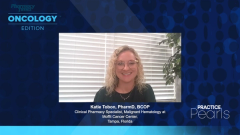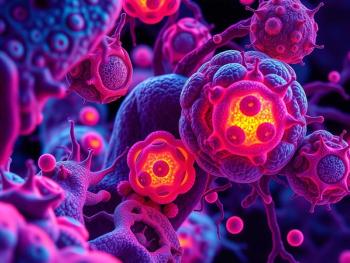
Using Prognostic Molecular Testing in CLL
Drs Katie Tobon and Javier Pinilla-Ibarz explore the role of prognostic molecular testing in chronic lymphocytic leukemia and comment on challenges seen with referral patients that come from community practices.
Episodes in this series

Javier Pinilla-Ibarz, MD, PhD: Let’s discuss next the role of prognostic molecular testing in CLL [chronic lymphocytic leukemia]. This is something that is well publicized because community oncologists handle multiple diseases and may not be really familiar. Let’s discuss how the prognostic molecular testing has been used? What is your rethinking? Obviously, we do use most of it. Discuss what is the challenge of using these new strategies or molecular testing.
Katie Tobon, PharmD, BCOP: This is a great question. As you know, all patients seen in our institution, whether they’re newly diagnosed or establishing care for history of CLL, they all undergo peripheral blood flow cytometry to confirm CLL. We also do the FISH [fluorescence in situ hybridization] diagnostic testing, as well as cytogenetics for looking for the IGHV [immunoglobulin heavy chain gene] status. There are some various cases where we’ll use the NGS [next-generation sequencing] testing upfront. However, whenever our patients are having to present to the next line of therapy, we definitely repeat the FISH and the NGS, and do that clonal evolution. Now, we’re talking about BTK [Bruton tyrosine kinase] inhibitors. We do perform the mutation analysis for any patient active BTK, or BCL2 [B-cell lymphoma 2] inhibitor at the time of progression. Dr. Pinilla, you just spoke a little bit about some issues or challenges that we see. Can you speak more about the challenges that we see with referral patients that come from the community practice?
Javier Pinilla-Ibarz, MD, PhD: We are working in an academic institution where there’s referring to a center which applies these new technologies and do a very thorough evaluation of molecular testing. However, sometimes in the community it is a little different. People may not be aware or may work with certain laboratories because sometimes they are going but what contracts they perform may not be familiar. There is data of real-life testing in the U.S. where, unfortunately, maybe he’s getting all of this data. A couple of years ago, a lot of community docs would not test for FISH nor for IGHV mutational status and is still using chemoimmunotherapy. Otherwise, this may not be well indicating in many of the subtypes of CLL; for sure they’re a high-risk population. It’s a good point.
Transcript Edited for Clarity
Newsletter
Stay informed on drug updates, treatment guidelines, and pharmacy practice trends—subscribe to Pharmacy Times for weekly clinical insights.
















































































































































































































